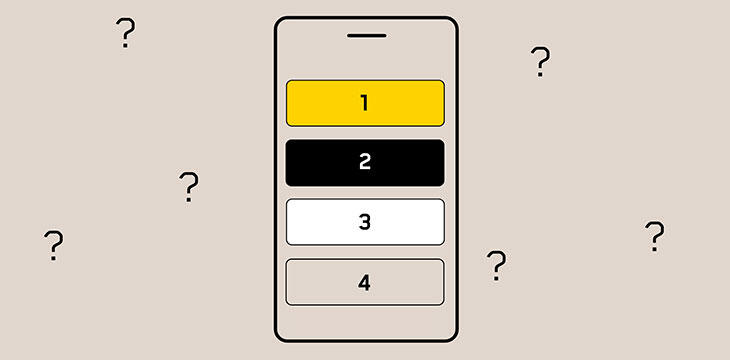
Setting up an IoT solution within a company enables the optimization of operations, the improvement of employee productivity, and the enhancement of its products and services. However, errors made during the process can come back to haunt you later. Here are a few pitfalls to avoid.
Facts
63% of companies also expect to make their IoT investments profitable in just three years.[ln]
2/3 companies with active IoT projects are even planning to set up other such projects in the next few years.[ln]
Short-term thinking
A common mistake with the Internet of Things (or IoT, the name given to the billions of connected devices worldwide) is underestimating project growth. After all, these technologies often have a way of snowballing within the businesses that adopt them.
Which isn’t very surprising. By adopting an IoT solution, a company can expect a fast return on investment. That means it’s likely to want to repeat the experience. Three of the four main benefits of the Internet of Things, according to the IoT Signals 2021 study by Microsoft, are operations optimization (55%), employee productivity (50%), and reduction of closures due to maintenance of equipment or tools (49%).
Three of the four main benefits of the IoT
- 55% Operations optimization
- 50% Employee productivity
- 49% Reduction of closures due to maintenance of equipment or tools
Etude IoT signal
According to the consulting firm Gartner, 63% of companies also expect to make their IoT investments profitable in just three years. Two out of every three companies with active IoT projects are even planning to set up other such projects in the next few years, according to IoT Signals.
“It’s important to choose solutions that evolve,” states Charles Coutu, Director of Product Development for Mobility and the Internet of Things at Videotron Business. “You should expect the needs of businesses to evolve,” reminds Coutu. Solutions adopted at the beginning of the process must therefore be updated and should be able to be integrated into a larger ecosystem, since other elements may need to be added to the puzzle later.
There are also higher costs for scaling up these solutions, which is often the first cause of IoT solution failure, according to IoT Signals 2021. Choosing technologies that can easily move from being a pilot project to becoming a large-scale solution can make all the difference.
The solutions adopted—both in terms of the devices themselves as well as the connectivity platform, for example—must also be adapted to the company’s future needs. A minimum viable product is a good way of establishing a solution quickly, but it shouldn’t dictate what will or will not be possible in the future. Deep thinking about the company’s needs and ambitions is therefore a requirement before establishing an IoT solution.
A company that is thinking long-term should also give preference to a next-generation IoT platform, rather than an older version. The former offer considerable advantages. They’re open, compatible with programming interfaces (APIs), and enable you to easily access raw data gathered by connected devices. All this provides better control over analysis of all of your data, your desired behaviours, and the automation between connected devices.
“This also allows us to use the software we want to take advantage of our data,” adds Bruno Crispin, Director of Projects and Strategies for Mobility Solutions and Business IoT at Videotron Business.
An older generation platform may suit a specific project, but it probably won’t adapt to future Internet of Things uses.
Choosing a poor connectivity solution
The various IoT sensors and devices can communicate between each other in different ways. Choosing the right connectivity solution enables you to optimize costs, simplify recharging, and make use of a technology that is powerful enough for your needs.
Good to know
A municipality that would like to track the rise in water levels in local rivers by installing various sensors along riverbanks in the area might be interested in LoRa technologies, for example. The protocol is adequate for the limited bandwidth involved in such projects, with the total coverage area being larger than what Wi-Fi is capable of, and the water level sensors can operate for 10 years on a single charge. Connecting to the 5G mobile network would require more frequent recharging, which would amplify operating costs for the municipality.
Other projects may however need higher bandwidth and perhaps even cellular connectivity. Such is the case with connected surveillance cameras, for example.
In this case, too, choosing a next-gen connectivity platform is important. “The new platforms offer a lot more control by the customer. They can configure their package themselves, activate lines, and manage their connectivity according to their needs at the time,” explains Coutu. These platforms are also international. A Montréal-based security company that decides to connect a surveillance camera in Alabama can do this using its current system, without having to find a new provider in the U.S.
Modern platforms also enable you to more efficiently manage these devices remotely. “They allow us to interact with equipment without having to relocate, such as when rebooting a device,” notes Crispin. For example, if you need to change the parameters for 10,000 connected sensors so that they connect to a new network, the fact that you won’t have to send staff to the site simplifies such operations considerably.
For both big and small IoT projects, this simplified management can have a significant impact on workforce needs, an advantage which is also especially interesting given the current labour shortage.
Underestimating security
Choices made during the set-up process for an IoT project could bring major benefits in the longer term when it comes to security.
And it’s not just major projects involving personal or confidential data that have a stake in this issue. Innocuous data shouldn’t be treated lightly. Even if your network only notes the temperature in certain locations in a given area, this data could be targeted by pirates. During the first half of 2021, security firm Kaspersky estimated that 1.51 billion attacks were carried out against the Internet of Things.
Good to know
Yes, data theft is sometimes the motive, but often the pirates are simply trying to take control of these devices in order to turn them into zombies and force them to attack other networks, or even turn them into cryptocurrency miners in some cases.
These zombie networks can be costly. A study by the University of California at Berkeley estimated that the attack on a website in 2016 by the Mirai zombie generated costs of around $17 per device for electricity and data consumed. The infected devices also reduced the quality of users’ experience and, in many cases, needed to be later replaced.
And the situation is even worse for those who process personal data. According to IBM Security, a single attack in Canada now costs an average of $6.75 million to the company involved.
Thankfully, you can protect yourself. “Next-generation connectivity solutions enable you to isolate the network from external attacks,” reassures Coutu. These solutions also simplify the remote management of devices, including the installation of updates, which provides you with a protected network, even as the years go by.
The possibility of updating these devices must be taken into consideration from the very start of the project in order to avoid any nasty surprises in a few years’ time. Note that a security strategy should also involve other elements, such as risk assessment.
Adopting a fragmented ecosystem
“Having to integrate a ton of devices and software yourself can lead to a disaster if it’s the first IoT deployment at a company,” states Crispin.
While zombie networks are a security threat, Frankenstein networks are a threat to efficiency. And this mistake is unfortunately an easy one to make. “I can shop online and find packs of SIM cards on Amazon, an IoT platform on the web, and hubs on Alibaba and get the impression I got a great deal, since I saved a bit of money,” explains Crispin.
But a fragmented ecosystem becomes more fragile over time. Incompatible updates, unlocatable parts, software solutions that need constant development, a portion of your devices that are no longer compatible with new protocols . . . saving money at the start can easily turn into a bottomless pit of expenses in the end. Sometimes this is enough to sink the project or prevent it from being anything other than a trial.
“And it’s not just a fragmented ecosystem you need to think about, there’s also fragmentation in providers,” continues Crispin. “It helps to have a single coordinator, one point of contact from beginning to end who can shoulder the responsibility and help you find the best business partners possible for putting your solution in place,” adds the Project and Strategy Director for Mobility Solutions and Business IoT at Videotron Business.
Thankfully, all these IoT pitfalls can be easily avoided by taking some time early on to make good decisions with regard to your current and future needs, and by asking yourself the right questions when you first start planning. You can also avoid a lot of problems by doing business with established, experienced firms who can provide a unified ecosystem and have a network of trusted partners, instead of trying to handle things internally using people with no IoT experience and who might easily fall prey to one of the above pitfalls.

Four points to remember
- Avoid Short-term thinking when investing in IoT
- Do not choose a poor connectivity solution
- Do not underestimate security when playing with data
- Do not adopt a fragmented IoT ecosystem
12 April 2022, By Videotron Business
Join the community
We’re here to help
References






